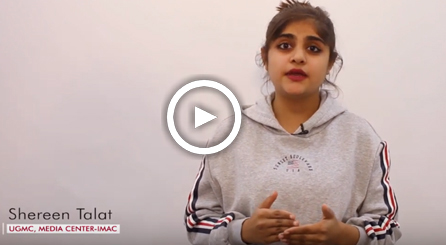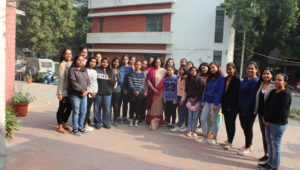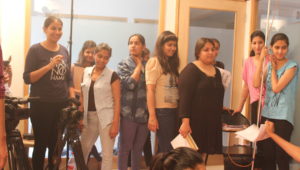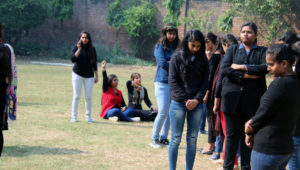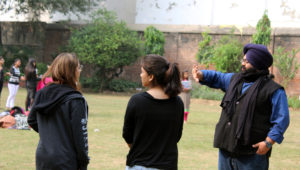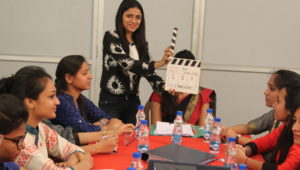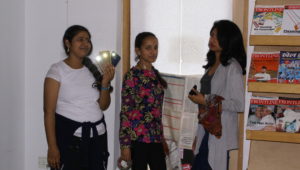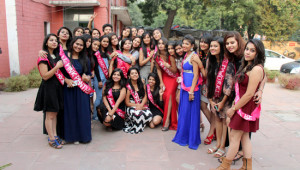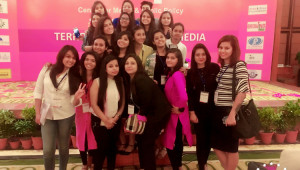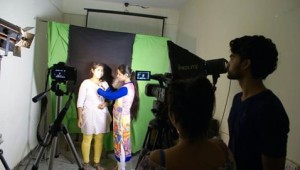There are following steps involved in writing a commercial script
- Step 1
Know the strict industry-standard script format. This includes writing everything in 12-point courier font, exact margin settings for the various elements, such as dialogue, character names, scene headings, general direction and personal direction, and additional elements, such as writing sound cues in all caps.
- Step 2
Pick a formatting program. Two popular programs are Final Draft and Movie Magic.There are also freeware screen-writing programs accessible for download, but these are generally of questionable quality.
- Step 3
Sketch a rough outline of events in progressive order for the script. One page of screenplay is equal to one minute of movie. A standard length for a first-time screenplay should be from 90 to 100 pages. Scripts are normally broken into three acts. The first act should familiarize the audience with the main characters and introduce the conflict. The second act should develop the conflict and will include the bulk of the story. The third act should resolve the conflict.
- Step 4
Focus on characters. Characters must cultivate and skill conflicting motivations to interest the audience. Character dialogue must sound usual and distinct. Practice saying the dialogue aloud as you write.
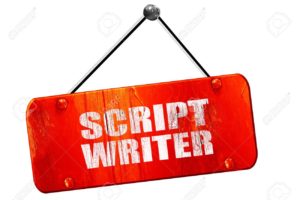
- Step 5
Write the first draft. The writing process can take anywhere from two weeks to several months, depending on your practice and the amount of time you devote to writing.
- Step 6
Ask for feedback after the draft is complete. Some writers join writing circles, while others get feedback from friends.
- Step 7
Register your completed script for copyright protection.
Tips & Warnings
- Pacing and arrangement of the scenes must be concise to keep a screenplay at a good length. Each scene must add to the progress of the plot and the development of the characters.
- Keep away from dialogue that repeats itself or has characters stating the obvious.
- Try not to show your script to others until you finish it to avoid negative
- Avoid the following script pitfalls: too much exposition, scenes that don’t “go” anywhere or predictable endings.
- Do not diverge from standard structure guidelines for your first screenplay.
Script Length
The average feature screenplay, traditionally, is between 95 and 125 pages long. In Hollywood these days scripts generally don’t run longer than 114 pages. Comedy scripts are typically shorter, dramas longer. There are, naturally, variations. You could be writing an action-packed film where your description takes only 10 seconds to read, but will take 45 seconds of film time.
Script Elements
These are the unique margin, case, and position attributes that give feature film script text the format and consistency expected by all participants. Once you are accustomed to them you’ll be able to tell your story the way an industry reader is accustomed to seeing it. The elements for a script are:
- Scene Heading
- Action
- Character Name
- Dialogue
- Parenthetical
- Extensions
- Transition
- Shot
Scene Heading – Writing Tip:
Scene Heading are aligned flush left (which we learned is about 1.5″ from the edge of the paper) and are rarely long enough to reach the page margin. The Scene Heading is written in ALL CAPS. Use a period after the INT. or EXT., a hyphen between the other elements of the Slug line. The Scene Heading, sometimes called Slug line, tells the reader of the script where the scene takes place.
Are we indoors (INT.) or outdoors (EXT.)? Next name the location: BEDROOM,
LIVING ROOM, at the BASEBALL FIELD, inside a CAR? And lastly it might include the time of day – NIGHT, DAY, DUSK, DAWN… information to “set the scene” in the reader’s mind.
The Slugline can also include production information like CONTINUOUS ACTION, or
ESTABLISHING SHOT or STOCK SHOT. Here are examples of Scene Headings:
INT. BEDROOM – MORNING
EXT. LAS VEGAS STRIP – SUNSET
INT. OFFICE – NIGHT – CONTINUOUS ACTION
EXT. KEY WEST MARINA – DAWN – ESTABLISHING
EXT. PASADENA – ROSE PARADE – STOCK FOOTAGE
EXT. – OUTER SPACE RAIN FOREST – NIGHT and two pages later:
EXT. – OUTER SPACE JUNGLE – NIGHT
Keeping Scene Headings consistent allows your reader to recognize locations and places and not have to figure out if this is a new set (location). You don’t want to take the reader’s mind off your story, ever.
Here is a sample in Scene Heading sample in script form:
FADE IN:
EXT. KEY WEST MARINA – DAWN – ESTABLISHING
We have ‘established’ that we’re in a marina at dawn.
Shots – The Rules:
Shots are formatted like Scene Headings, flush left margin, all uppercase. Blank line before and after. A SHOT tells the reader the focal point within a scene has changed. Here are some examples of shots:
- ANGLE ON –
- EXTREME CLOSE UP —
- PAN TO —
- FRANKIE’S P.O.V —
- REVERSE ANGLE –
Writing Tip:
As a writer, for reasons already mentioned you should be very judicious using a SHOT to
Redirect the reader’s focus. Your “direction” runs the threat of interrupting the flow of your Storytelling. If what you really want to do is direct films, do yourself a favor and DON’T do it in a script you’re trying to sell… wait until it sells and try to discuss a package deal with you on board as the director. This most often is a possibility after you’ve already had one of your screenplays filmed.
Once in a while, calling a shot is essential. You want the reader to see something not obvious in the scene or you want to attain a particular emotion or build to a climax. This tool allows you to accomplish this goal.
Another shot used from time to time is INSERT. INSERT is used solely as a direction – to focus on something important to the scene, often something that the audience needs to read or what would otherwise be too small to be clearly seen in a full, wide scene.
Intercuts
Occasionally in a script, you might want to cut back and forth between two or more scenes.
These scenes are occurring at the same time. Instead of repeating the Scene Heading for each
scene over and over, an INTERCUT is used. This gives the reader the sense that the scene is
moving swiftly back and forth between locations. There is a great sequence of intercuts in The Deer Hunter of shots of hunters out in the woods with a wedding going on simultaneously, at a diverse location.
[This article is published by Media Center-IMAC in interest of student awareness and career guidance. Media Center-IMAC specializes in Post-Graduate/Under-Graduate diploma courses in Media Studies and Mass Communication & TV journalism. With practical oriented and industry specific course, Media Center- IMAC is a prominent institution in Delhi.
Our alumni have proven themselves in the media world and are currently working at prestigious media organizations and top news channels. Besides full time diploma courses, Media Center-IMAC also offers specialized certificate courses in TV reporting, Digital marketing, video editing, radio jockeying, photography and many more.
For more info, visit: http://www.mediacenterimac.com/
Or email at: mediacenterimac@gmail.com
Or call at: 011 43489010, 8076807939.]








